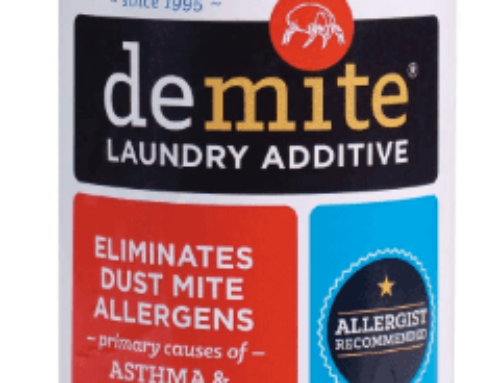Table of Contents
When dust mites are causing misery in your home, you’ll want to use every arsenal you can find to eliminate these pesky creatures. Bleach is often mentioned as one of the solutions, but is it effective in killing dust mites?
Bleach And Chemical Composition
It is common to find bleach in our households. This is because sometimes those clothes we really love to wear get stained and we usually cannot wait to eliminate the stains. It is not only the clothes that benefit from the use of this laundry detergent but also our bathrooms.
The main constituent found in bleach is sodium hypochlorite. It is a chemical that in liquid form happens to have strong oxidizing properties. It has a greenish or yellow appearance. The reason why it is commonly known as bleach is that it is the most active ingredient found in the bleach solution. Bleach is made of one sodium (Na), one chlorine (Cl) and one oxygen atom. The chemical formula for it is NaClO.
This sodium hypochlorite is made through the Hooker process whereby sodium hydroxide is exposed to chlorine gas. Other than just sodium hypochlorite, water and sodium chloride is also produced.
Aside from its use in laundry, sodium hypochlorite has other uses which include:
- Disinfecting surfaces around our homes
- Sanitizing kitchen utensils as well as food processing equipment
- Use in water treatment for the elimination of bacteria and microorganisms in order to prevent waterborne diseases.
- Use in dentistry and treatment of the skin.
How Does Bleach Kill Dust Mites

Chlorine can be used to kill dust mites while doing laundry. This is how it works. Whenever you do your laundry you either clean the items in cold or warm temperatures. A lower temperature is preferred most of the time which is good for the environment.
However, the same cannot be said for those who suffer from dust mite allergies. This is because it takes temperatures of over 120 degrees Fahrenheit for dust mites to die. It is for this reason that people often prefer to add bleach or detergents that contain some bleach while they are washing their clothes.
Most insects breathe through the exoskeleton. Therefore, the moment you spray some bleach on them, you will be able to eradicate them effectively. Bleach also gets rid of such pests by eliminating their eggs. It can also disrupt the chemical trails of certain bugs. That way, they will be unable to find their way back to your home.
Is Bleach Effective In Killing Dust mites?
Yes, it is.
All the detergents used in a certain study extracted the mite allergens within five minutes while used in cold water. It still isn’t clear how effective additives like bleach are in washing. However, leaving mites in bleach of a 0.35% concentration for four hours at 35°C (95°F) killed 100% of D farinae, a specific dust mite species.
That said, it only killed 32% of the D pteronyssinus species. When a 10% concentration of bleach was used, 100% of those two species were killed.
Bleach is a double-edged sword. As much as it kills dust mites, bleach can be potentially harmful for humans.
According to studies, regular use of household bleach is linked to more bronchitis and respiratory symptoms. Short-term use of a solution of diluted bleach on the different surfaces at home is believed to be less harmful. It is however unlikely that such dilute solutions would help in doing your laundry effectively.
How To Use Bleach To Kill Dust Mites
Chlorine bleach is the most powerful home bleach. It is commonly available in liquid form although you can also get it in dry form. They should both be diluted in water before being used for laundry purposes.
You can easily purchase chlorine bleach in retail stores or online.
Never pour bleach directly onto fabrics.
The chlorine bleach acts as a disinfectant and generally whitens clothes. When using it in the wash, add it at the correct time and correct temperature. Remember, it has a low shelf life and as such, it loses its effectiveness if the bottle has been open for over six months.
There is also the option of using oxygen bleach. It is safe for most fabrics and colors. However, never use it on wool, silk or even leather. It is slower compared to chlorine bleach since it contains no disinfecting properties. It is most effective when used in powdered form. When mixing it with water, use warm water so that it completely dissolves, then add cold water if necessary.
Adding bleach to your laundry will kill the harmful dust mites.
Precautions When Using Household Bleach
- Around children. If you live in a house that has children, it is advisable to keep the bleach or any other type of cleaning product away from their reach. Better yet, keep them locked somewhere safe. It also helps to mark them correctly and label the toxic ones with the correct numbers of your local poison control center.
- Be careful while mixing. Make sure you never mix chlorine with other different products used for cleaning. Ammonia or other acidic products should be kept at bay when you are using chlorine. Should these come into contact with bleach, very toxic gas is released that may be fatal. The only thing you should mix chlorine with is water.
- Stay protected. Always make sure that your hands are protected when you are using bleach. Wear gloves so that you do not end up damaging your hands. You might even end up with scaly hands or they may start to bleed. Chlorine bleach is rough on the skin hence the need for extra protection.
- Keep windows open and make sure the room in which you are using the bleach is well ventilated.
Using Bleach Activators In Dust Mite Control
Bleach activators intensify the bleaching and organism-killing effects of laundry products. When harmful dust mites are exposed to bleach activators, they are eliminated faster than when they are exposed to just chlorine under general conditions of washing.
A study was conducted to find out the effect of different bleach activators in the elimination of dust mites. Sodium lauroxybenzene sulfonate was the most effective in killing the D. Farinae species.
Bleach activators allow one to use lower washing temperatures than would usually be required in order to achieve the full benefits of bleaching agents.
Bottom Line
Household bleach is effective in killing dust mites. But as a chemical-based agent, there are risks involved where improper use may lead to injuries. If you find using bleach too risky, you should try natural dust mites sprays which are gentle on humans.
Related:
- Does Rubbing Alcohol Kill Dust Mites?
- Natural Essential Oils That Kill Dust Mites
- Will Vinegar Kill Dust Mites?
- Best UV Vacuum Cleaners For Dust Mites
- Does Baking Soda Kill Dust Mites?




Leave A Comment